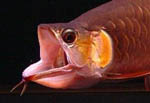|
pH levels and Hardness
The pH level is the measurement of acidity and alkalinity of the water. The 'hardness' of the water
is the measurement of the amount of minerals in the water.
These two parameters are actually very closed related.
Water is considered "hard" when there is a high content of minerals (e.g.Calcium) in it. The pH level of the water will
be above 7 and thus be higher than neutral. When the water is lacking in minerals, it will be considered "soft" and its pH
level will be below 7, which is lower than netural.
pH levels are measured on a scale of 0 (extremely acidic) to 14 (extremely alkali) and 7, being netural, is considered
the ph of normal drinking water (which is actually not always true). Harness is measured on a unit of milligrams per litre
of dissolved calcium salts. The properties of pH levels and hardness can be measured by purchasing the hardness and pH
test kit or pH meters, or gH or kH test kits from your LFS.
____________________________________________________________________
Aquarium Lighting
The correct lighting of your aquarium depends on the individual set-up
and the light requirements of the inhabitants. Lighting influences the growth of your plants, corals, and invertebrates as well as the behavior of your fish. Incorrect lighting
will result in many problems, as it is directly related to photosynthesis, CO2, and nutrients.Appropriate lighting that meets the requirements of your set-up will enhance the overall
appearance and health of your aquarium.The light spectrum describes the combination
of colors of which the light consists of. Namely red, yellow, green and blue (rainbow colors). These spectrums are measured
as "color temperature" - Kelvin (K).Red and yellow produce lower temperatures
while blue light produces a higher temperature. Lower and higher defined as the basic sunlight with
5500 K.
The Color Rendering Index (CRI) is indexed on a scale from 0 – 100. 100 being the equivalent to sunlight and how objects would naturally appear. CRI is an expression
of the degree to which the illuminated objects appear according to their true natural color.The intensity of light is given as Lux or lumen. This is very essential, because a light source moved only 2 inches
away from the water will be 4 times less intensive. So even if the light source is correct, it might also still be insufficient,
depending on the distance to the area to be illuminated.Too much red light in combination with high nutrients will stimulate algae
growth. In this case we are talking about 4000 K. Always adjust the lighting to the natural habitat of your fish. Too much light will not blind, or fry them, but they
may hide out. Dust humidity, water turbidity and dirty vinyl or glass covers
will influence the light as well. Intense lighting in combination with
high nutrients will enhance algae growth. Combined with silicates the result will be brownish algae. Combined with phosphates the result is more red and greenish algae.You should adjust your aquarium lighting to meet the needs of your set-up and inhabitants.
___________________________________________________________
ORP Monitor
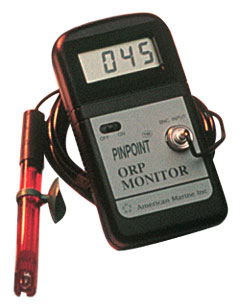
pH Meter

Hand- held pH Pen
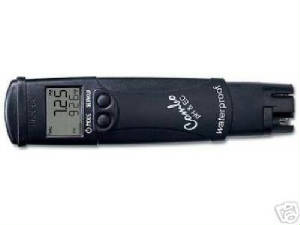
________________________________________________________________________
Ketapang Leaves
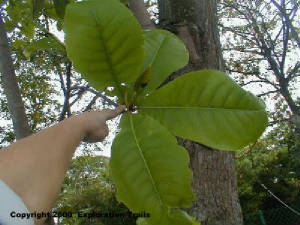

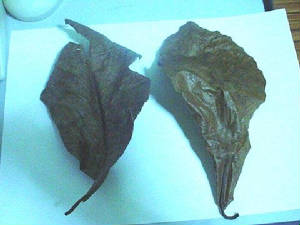
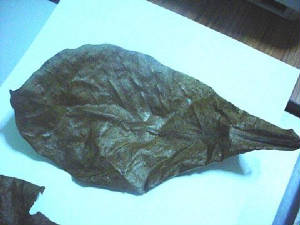
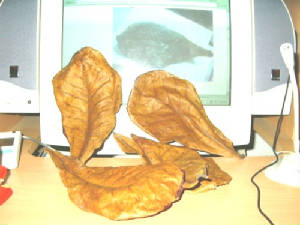

Adding Ketapang leaves to the aquarium is an attempt to simulate the natural BLACK WATER environment, Ketapang leaves
can also bring down pH level and maintain it. The disadvantage is it will tint the water slightly brown, through it is totally
healthy and beneficial to fish.
____________________________________________________________________________
Coral Chips
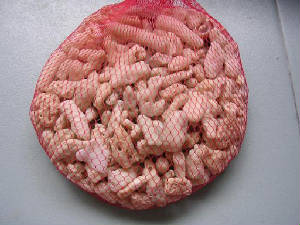
To increase pH level. It will also help to buffer the water if there is a sudden change in pH.
_____________________________________________________________________________
Dechlorination
Tap water is the most common source of water used by hobbyists and breeders. Therefore dechlorination is a good
practice to prevent fish fatality due to chlorine toxicity. Chlorine, present in small amounts in tap water, can kill
all fish including Arowana. Chlorine is used in many forms (gaseous or as chloroamine) to disinfect tap water for drinking. If
chloroamine was used, the tap water can be treated with a dechlorinator (available from LFS). If gaseous chlorine has
been used, another way is to aerate the tap water overnite by using an air pump.

- Ocean Free Super Fish Guard
- Removes chlorine & chloramine
- Buffer pH
- Promotes natural healing with Aloe Vera, vitamin E & B
- Detoxifies heavy metals & some toxic chemicals
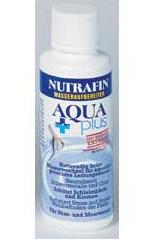
- Nutrafin Aquaplus
- The tap water conditioner
- Makes tap water safe by eliminating chlorine and chloramine
-
Neutralises heavy metals
- Protects fish by replacing their natural protective mucous coating
- Contains P.H.E. - Pure
Herbal Extract
- Contributes a positive sedating effect against stress related to transportation, handling and introduction
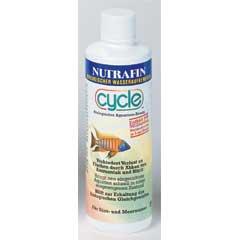
- Nutrafin Cycle
- Biological Aquarium Supplement
- Contains beneficial bacteria; nitrosomonas and nitrobacter
-
Works together with other beneficial strains to eliminate harmful toxins
- Super concentrated
- The ideal mix of beneficial
bacteria to make the aquarium water purer and the environment healthy
- For fresh and saltwater aquariums
|
